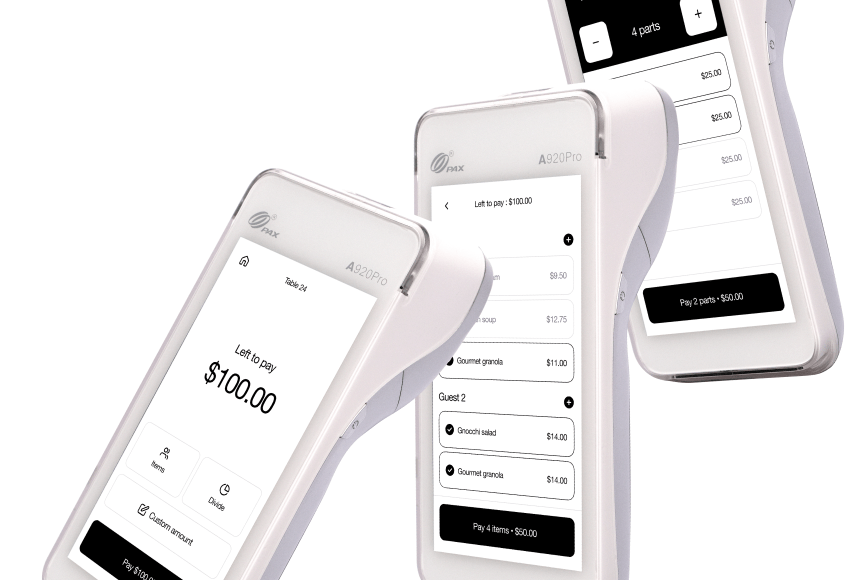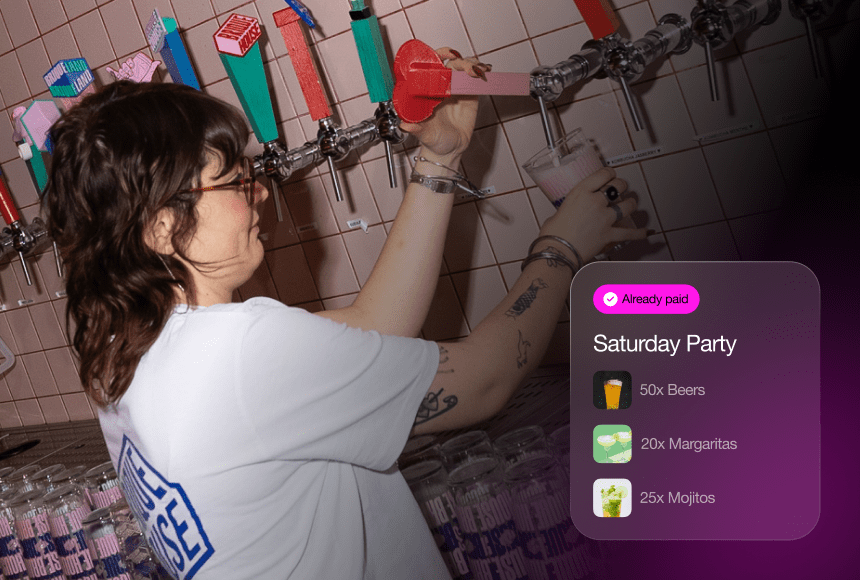
Ensuring Equitable Tip Sharing to Boost Team Morale and Retention
Why Fair Tip Distribution Matters More Than Ever
In the competitive landscape of today’s restaurant industry, fair tip distribution is more than a nicety—it’s essential. Tips can represent a significant portion of your team’s overall income, and how you handle them directly impacts employee satisfaction, retention, and cooperation. According to recent data on tip-sharing trends, restaurants that implement clear, equitable tip policies report higher morale and lower staff turnover.
However, between different server roles, back-of-house demands, and the growing push toward pooled tips, the concept of “fairness” can get murky. That’s why having a transparent system is critical. This article dives into the best practices for structuring tip-sharing arrangements, using modern tools—like digital payment platforms such as sunday—to streamline the process and protect both your staff’s trust and your restaurant’s bottom line.
1. Establish Clear Roles and Responsibilities
A solid tip distribution policy starts with clarity on who actually contributes to the guest’s experience. While the bulk of tipping culture traditionally revolves around servers, many front-of-house staff—hosts, bussers, bartenders, and even baristas in certain formats—play a tangible role in service.
Why it matters:
- Acknowledging Collaborative Efforts: When diners tip, they’re often tipping for the overall experience, not just the person who delivered the meal. Hosts who seat guests promptly, bartenders who craft quick cocktails, and bussers who keep tables clean all shape that experience.
- Preventing Resentment: If your busser or bar staff isn’t included in tip distribution but sees how their efforts consistently lead to higher checks, frustration can build, threatening teamwork and staff retention.
Practical tip: Document each role’s contribution in writing. For instance, define how much “front-of-house support” and “bar service” factor into the final tip pool. This sets expectations from day one.
2. Choose a Tip Distribution Model That Fits Your Concept
Different restaurants use different tip-sharing structures. What works in a fast-casual burger joint might be all wrong for a high-end steakhouse. Some common approaches include:
Tip Pooling
All tips from a shift go into one pot, which is then divided among eligible staff, sometimes weighted by hours worked or role. This fosters a “team victory” mindset but can risk demotivating high performers who feel they contribute more.
Tip Outs
Servers keep their direct tips but are required to “tip out” a percentage to support staff, like bartenders or bussers. This system preserves individual motivation but can create tension if staff argue over how big a percentage is truly fair.
Hybrid Models
Some restaurants combine elements of pooling and tip outs—maybe pooling for host/busser shares, while servers keep the rest. This can balance fairness with encouraging personal initiative.
Key advice: Align your model with the nature of your service. High-end, multi-course dining often benefits from pooling to reflect the collaborative ambiance, while smaller, casual spots may prefer straightforward tip outs for simplicity.
3. Stay Compliant with Legal Regulations
Before you finalize any tip policy, confirm you’re not treading into illegal territory. U.S. labor laws have specific guidelines on tip pooling and how owners or managers may (or may not) participate.
Important points to note:
- Managers and Owners Typically Excluded: In most scenarios, management can’t partake in the tip pool unless they also regularly perform tipped duties (like bartending). Double-check local laws for specifics.
- Minimum Wage Considerations: If your state or city requires paying servers a set wage plus tips, ensure your distribution scheme doesn’t inadvertently lower them under minimum wage thresholds.
- Transparency Requirements: Some regions mandate that employees must be informed in writing about any tip-pooling or tip-out arrangement. Documentation is your friend; keep it updated and easily accessible.
Neglecting legal guidelines can land you in hot water, with fines or lawsuits that overshadow any short-term benefits of your policy.
4. Communicate the Process Clearly
No matter how fair or legally sound your system, if your staff doesn’t grasp it fully, suspicions can arise. Lack of transparency breeds rumors, especially when money is involved.
Suggested best practices:
- Written Policy: Provide each new hire with a concise explanation of how tips are split, updated whenever your approach changes.
- Regular Meetings: Use a quick monthly check-in to discuss any concerns or adjustments. This open forum keeps staff engaged and fosters trust.
- Real-Time Access to Tip Info: If you use digital solutions for collecting or managing tips, let your staff see the daily or weekly totals. The more employees know, the more confident they’ll be.
Consider referencing actual examples: e.g., “Our standard server tip-out to bartenders is 5%, reflecting bar service’s average contribution to final checks. If anything changes, we’ll meet as a team to discuss.”
5. Use Digital Tools for Accuracy and Fairness
Remember the days of counting crumpled bills in a corner after closing, and scribbling breakdowns on scraps of paper? That method is prone to human error and can undermine staff confidence. Digitize the process:
- Real-Time Tracking: Your point-of-sale system can log each transaction. You see exactly how many tips come in from tables, bar seats, or online orders.
- Automatic Allocation: With a digital approach—like using sunday for contactless payments—tips flow into a central pot or get attributed to the correct server. Systems can automatically apply pre-set percentages to bar staff, bussers, etc.
- Transparent Reporting: Generate end-of-shift or weekly summaries that break down total tip amounts and each team member’s share, eliminating the guesswork.
Digitally recording and distributing tips also speeds up cash-out at closing time, so staff can head home with minimal waiting.
6. Incentivize Teamwork Through Performance Bonuses
Equitable tip distribution doesn’t mean ignoring individual hustle. Many restaurants combine a baseline tip pool with performance-based bonuses. For example, you might set aside a small portion of total tips for the top upseller of the night or someone who consistently gets high customer feedback.
Why it helps:
- Team Spirit Plus Personal Motivation: Everyone gets a fair slice, but there’s also room for go-getters to shine.
- Focus on Service Quality: If your servers know that outstanding reviews or strong upselling results in a bonus, they’ll likely maintain a friendly but proactive approach with guests.
Just ensure the bonus criteria remain objective and transparent, so staff perceives it as genuine recognition, not favoritism.
7. Factor in Kitchen Staff, Too
In certain states and under certain tip-sharing models, back-of-house staff (like chefs, line cooks, and dishwashers) can receive a portion of the tip pool if local regulations allow. This acknowledges their direct role in delivering a top-notch meal.
What to consider:
- Legal Constraints: Some jurisdictions prohibit sharing tips with employees who do not regularly interact with customers. Verify your local laws.
- Salary vs. Hourly Differences: Many kitchen pros are on fixed hourly or salary rates, so a portion of tips can be an unexpected but welcome addition. Ensure any distribution aligns with budget and fairness for front-of-house teams.
If you choose to include back-of-house, highlight their share as a testament to your restaurant’s belief in a fully collaborative environment—everyone’s effort counts.
8. Provide Incentives for Digital Tipping
Cash tips remain popular, but digital tipping is on the rise—especially when transactions happen via QR codes or online orders. Encourage guests to tip via these channels by making the process as user-friendly as possible:
- Pre-Set Tip Suggestions: Offer 15%, 20%, 25% on the digital screen. Many diners will select a pre-set amount instead of manually typing in a lower figure.
- Short Thank-You Notes: A quick message like, “Your tip helps our team thrive—thank you for supporting us!” can spur generosity.
- Highlight Speed and Convenience: If diners realize they can settle up instantly and tip with just a couple of taps, the frictionless feel might prompt them to tip a bit more than usual.
Making digital tipping effortless also helps reduce missed tips when guests don’t carry cash. Everybody wins—your staff, your bottom line, and the diner who enjoys a streamlined experience.
9. Regularly Review and Adjust Your Tip Policy
A tip distribution method that works now may not be perfect six months later—especially if you expand your bar area or shift your menu’s focus. Let your plan evolve.
How to keep it fresh:
- Monitor Staff Feedback: Create a comfortable environment for employees to voice concerns or suggestions about the current distribution system.
- Check for Seasonal Changes: If your restaurant sees major seasonal swings (like a summertime boom), reevaluate whether your tip pool or tip-out percentages still make sense.
- Keep an Eye on Industry Trends: Tipping norms can shift in certain areas or generational demographics. It pays to see if neighboring restaurants are adopting new tip policies that resonate with customers.
By acknowledging that tip policies aren’t set in stone, you maintain the flexibility to keep your staff happy and your guests feeling appreciated.
10. Celebrate Wins to Foster a Positive Culture
Finally, tip distribution shouldn’t feel like a hush-hush, after-hours activity. Make it a moment to celebrate your team’s collective success.
- Recognize High Earners: If one shift collectively hit a record average tip percentage, share the good news in a quick staff meeting or group chat. This encourages healthy, positive competition.
- Share Customer Compliments: Did multiple online reviews praise how friendly or efficient the service was? Tie that back to the tips the staff earned—showing that going the extra mile really pays off.
- Provide Growth Opportunities: If certain employees consistently earn positive feedback or strong tip figures, consider them for leadership roles or specialized training that can advance their careers.
A sense of pride and camaraderie around tip distribution can transform a typically mundane aspect of the job into a collective motivator.
Embracing Fairness and Transparency for a Stronger Team
At the end of the day, how you handle tips is more than a financial detail. It’s a reflection of your restaurant’s values, shaping the daily experiences of your staff and, by extension, your guests. When employees trust that they’ll receive a fair share, they’re more likely to invest energy in satisfying diners—leading to higher tips overall, forming a virtuous cycle of great service and grateful customers.
Whether you opt for a tip pool, tip-outs, or a hybrid model, keep your policy clear, legal, and considerate of everyone’s contributions. Bolster it with digital platforms—like sunday—that streamline tipping, add transparency, and even let you gather real-time data on each transaction. The result? Smoother shifts, happier staff, and a culture of collaboration rather than competition.
So, if you’ve been treating tip distribution as an afterthought, it might be time to rethink the approach. Properly structured, a fair, transparent system can spark staff loyalty, reduce turnover, and elevate your entire dining experience. And in an industry where labor retention and consistent service are ongoing battles, that’s a recipe for long-term success.
Find out more today
Drop us your details below and we’ll reach out within the next 24h
More tips means a better service.
More tips mean better guest-experience, and better staff-retention.



